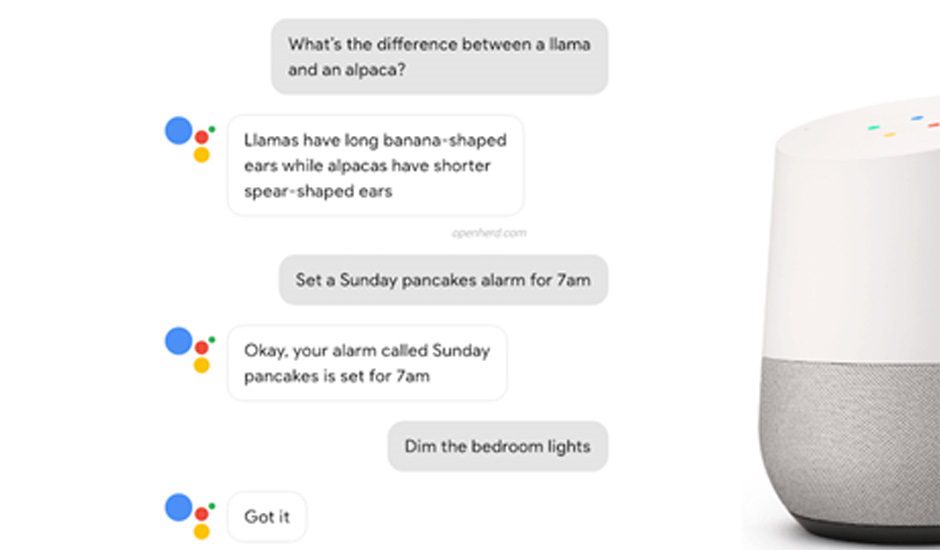In May of 2016, Google introduced the Google Home Assistant at the I/O Developer Conference in California. This is a cylindrical-shaped device with a built-in voice-activated Google Assistant, which communicates with smartphones based on Android and iOS. First of all, Home appeared on the American market, which created an inconvenience for residents of other countries where the device is not yet sold. For example, to set up the device, a foreigner would have to translate his phone into English, which is the only control language.
Google positions Home as a universal gadget that helps you get answers to your questions with voice and manage your other home devices. For example, turn the lights on and off or play a video on your TV with a connected Chromecast or Android TV. Google Home sales, which cost $129, began in November of 2016 and according to Strategy Analytics, the company will sell the first million devices by mid-2017.
Living with Google Home
Using Google Home begins almost immediately after unpacking: setting up the app takes a couple of minutes. But after unpacking and connecting, the user must first get used to communicating with the assistant using voice only. Home’s surprisingly pleasant and human-sounding voice helps us feel comfortable with this technology. Soon after purchasing Google Home, the user begins to talk to this female-sounding ‘assistant’ almost as though it were a living person. The gadget builds a strong image with its voice. This strongly distinguishes the Google Home system from a previous Google assistant called Now, which could only open a search engine page by request.
It is easy to assess the convenience of Google Home when at home. For example, you can install the gadget in the kitchen where its use is very advisable (after all, our hands are always busy there), and thus learn to speak with the gadget. It is enough to talk with the assistant just a few times while washing dishes or cooking for communication to become natural and familiar.
Another useful application of Google Home is the morning briefing: the device can tell you about the weather, the latest news, and the schedule for the day. Again, for the full operation of this function, a foreign user must translate all entries in the calendar into English – the assistant does not identify events in any other language at this point.
Also, you can find out the time for boiling eggs and put on a timer. The main thing is not to forget to start each request with the phrase “Ok, Google.” The gadget does not listen to the user after the answer is sounded. However, it understands complementary questions. For example, you can find out about the weather in New York for today and ask after that: “And tomorrow?” – and Google Home will answer!
If the question implies a more detailed answer (for example, you were looking for a recipe or an article), then Home will send a link to the corresponding page in the app on your smartphone. Of course, such communication cannot create a full-fledged illusion of talking with a living person, but it’s very close to it.

Services for Google Home
When using Home on a daily basis, it is unlikely that the user will feel an acute shortage of functions: the device answers questions correctly. At the same time, the system is being developed and supplemented with new skills – for example, Uber’s function has recently appeared.
Google Home has many ways in which it can grow. For example, Alexa (a similar device by Amazon) has more than ten thousand commands and skills, even though they are actively tied to Amazon services and quite useless in many countries.
Is it worth it buying Google Home?
Literally, within a week of purchasing Google Home, you will get used to the fact that you can simply ask a question in the air, and the gadget will answer it from the corner of the room clearly and loudly. In addition, Google Home can play all your music, and if you have multiple “assistants” in your home, they can even be synced to play the same music at the same time.
You can synchronize Google Home with many of your various gadgets so that all your favorite devices can be controlled from Home. This includes smart bulbs and Chromecasts and even integration with instant messengers and call services. To top it all off, Google Home is affordable for most family budgets at just under $130.




